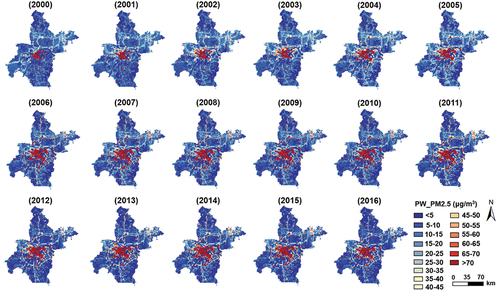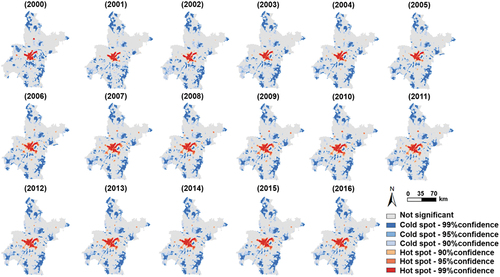Figures & data
Figure 1. The study area and the spatial distribution of the 10 air quality monitoring sites (①-⑩) within Wuhan.
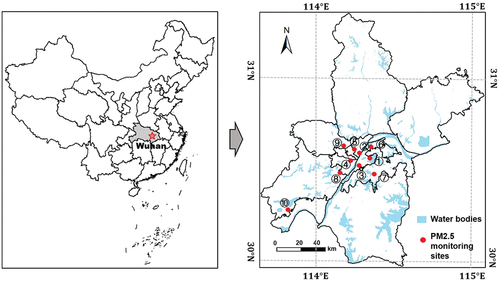
Figure 3. The time-series clustering results by K-DTW was shown in . Spatial distribution of (a) inter-annual average, (b) standard deviation, and (c) time-series clustering result of PM2.5 exposure patterns in Wuhan in 2000–2016.
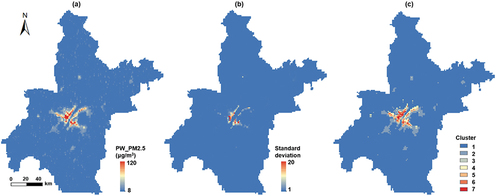
Figure 4. The average temporal variations of PM2.5 exposure risks in seven clusters and averaged across Wuhan from 2000 to 2016.
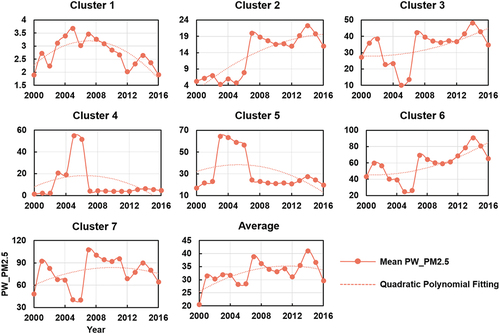
Table 1. The primary surface properties of seven time-series clusters.
Table 2. Optimal bandwidths of GWR and MGWR from 2000 to 2015.
Supplemental Material
Download MS Word (338.1 KB)Data availability statement
The annual ground-level PM2.5 concentration dataset can be accessed from the Socioeconomic Data and Application Center (https://beta.sedac.ciesin.columbia.edu/data/set/sdei-global-annual-gwr-pm2-5-modis-misr-seawifs-aod). The LandscanTM population distribution data is provided by Oak Ridge National Laboratory (https://landscan.ornl.gov/). Annual land cover products in China (CLCD) are freely available at http://doi.org/10.5281/zenodo.4417810.

